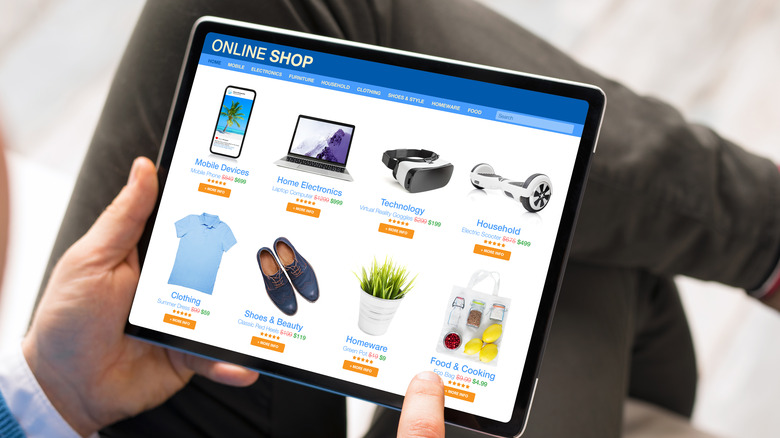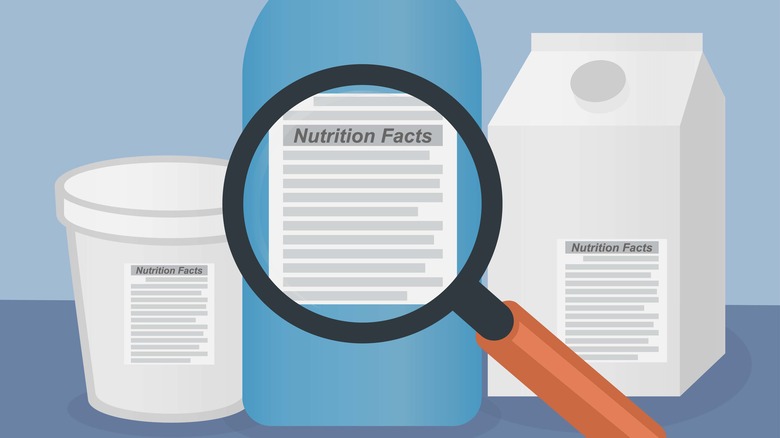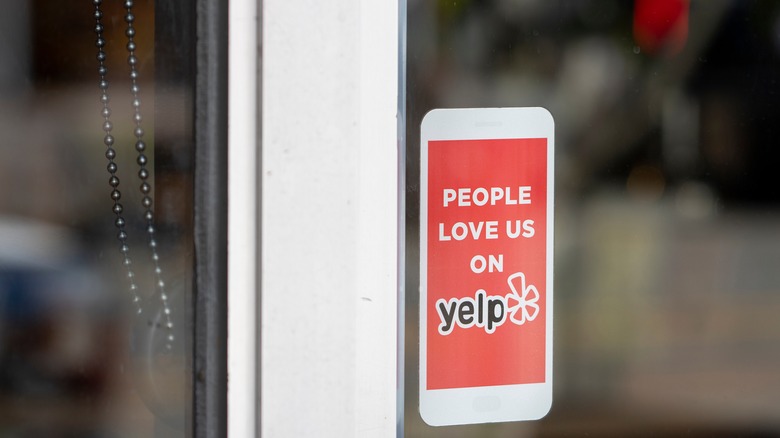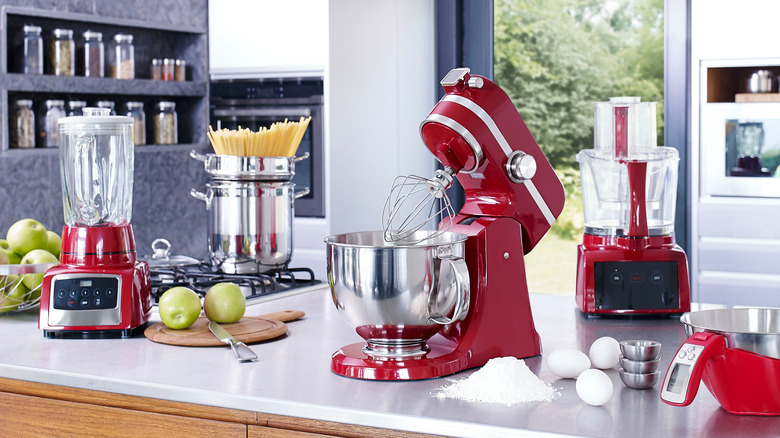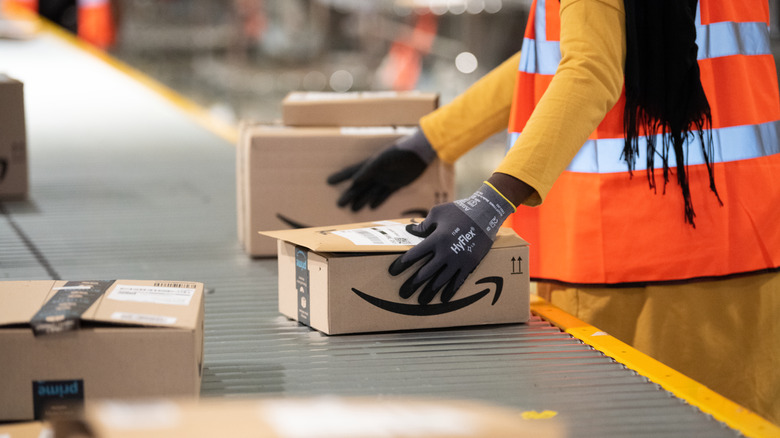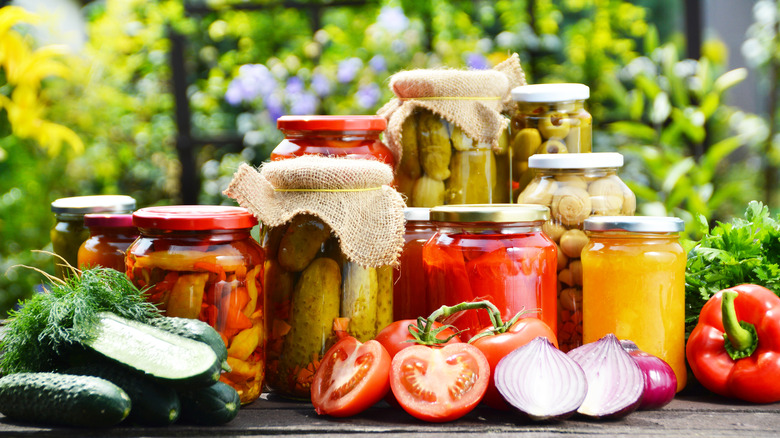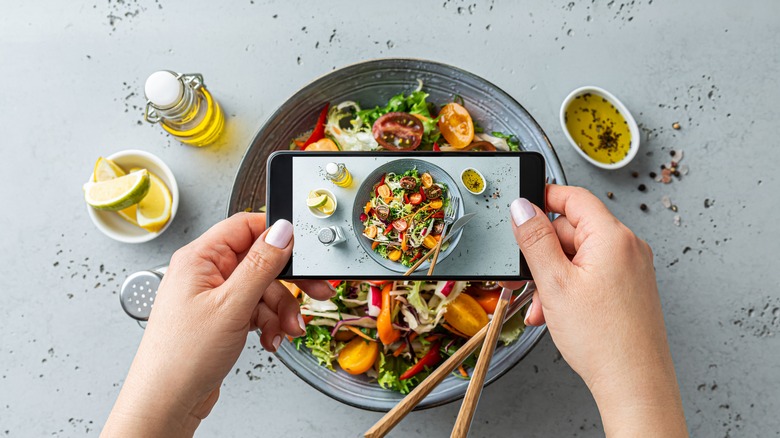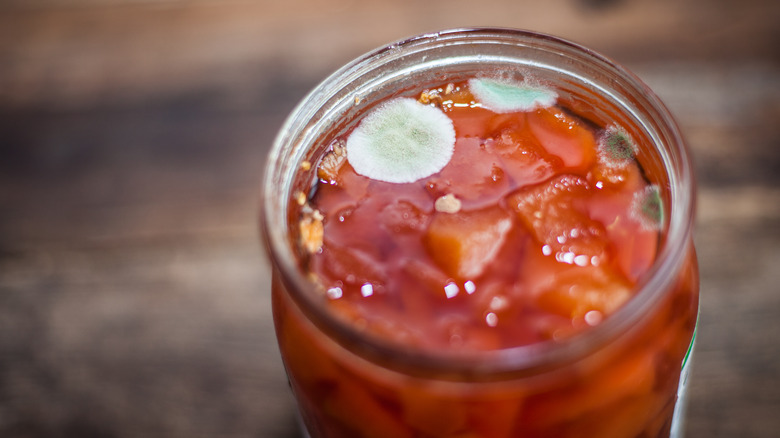14 Red Flags To Look For When Buying Food Online
One of the many things we have to thank the internet for is the ability to browse food products that we might have never known existed. This opens the gate to explore cuisine from other cultures, to better support minority-owned restaurants and businesses, and to follow trending new things in the culinary world — not to mention that having products conveniently delivered right to your doorstep can be a lifesaver. There are a number of ways that online food ordering has evolved: Of course, it changed the takeout business in a serious way, especially during the pandemic, but there are also the meal box subscription services and improved access to faraway customers for small businesses peddling edible wares.
However, the opportunity to buy food online also brings the risk of being deceived when buying food online. Just look at the Pink Sauce drama, which originated from a social media chef selling her homemade sauce through the internet, setting off a wave of alarm with its shelf-unstable ingredients and chaotically erroneous nutritional label. Getting a mini version of something when you order furniture is comical, and getting the wrong size of shirt when you order clothes is annoying, but there can be more serious consequences when the food you've purchased online isn't as it should be. This doesn't mean you can't ever safely order edible products from the web. Just follow our tips for safe internet food shopping and always trust your gut — in order to protect your gut.
1. Is there a product label available for you to view?
While it's not a bulletproof vetting tool, the presence of a product's nutrition label, especially before you commit to purchasing it, can tell you a lot about the food you want to buy. Pink Sauce being a perfect case in point that you should probably avoid a product the label of which is full of grammatical, numerical, or logical errors. Taking a read-through of the ingredient list is a good idea, too — look up whatever ingredients you aren't familiar with if you're particularly concerned about the quality of the food. Some products shouldn't need a mile-long list of components, but in other instances, it's not necessarily a red flag. For example, spices and seasonings could make up three-quarters of the ingredients, but that's not really a warning sign — unless you are allergic to one of those spices, of course.
Generally speaking, the presence of a nutrition label indicates that the food's producer — whether they be a bakery, a kitchen, a confectionery, or a factory — is willing to be held accountable to at least some degree. They have taken the care to keep track of what goes into their products, and to note the nutritional details. Keep in mind that ingredient lists and nutrition labels may not be available for proprietary products and secret recipes — but a reputable vendor should still be willing to answer any questions you have about ingredients or nutrition for dietary or allergen purposes.
2. Is there a lack of seller history?
A seller's history of satisfied customers is another important thing to look for when shopping online for food — and a lack of any history at all can be just as telling as a history of displeased shoppers. But a seller's history is about more than just reviews; a business that's been building its brand for years will (probably) have established social media pages with followers, a diverse product line, and at least a couple months' worth of posts.
Good seller history could look like positive press or a blog, too. A seller with good customer rapport may also have an about page that readily identifies and pictures its ownership or management, plus the business' overall background and any other relevant details — you may want to consider a seller who isn't forthcoming with this information to be a red flag. Overall, look for online food businesses that have clearly been around for at least a couple of months and take care in tending to their digital presence.
3. Is the food made in a home kitchen?
Look, there's nothing wrong with enjoying Auntie Linda's homemade holiday cookies, especially if you've personally vetted the state of her kitchen. But no one wants salmonella for Christmas, and that's why you should proceed with caution if the food product you're considering is made in a home kitchen. We aren't saying that every single home kitchen is an unsanitary place by default — in fact, there are quite a few delicious foodstuffs for sale online that are made in home kitchens — but an unqualified or amateur vendor is probably more likely to be found outside of a professional kitchen. Don't let the seller's lack of a professional, regulated cooking space go unnoticed if there are already other reasons that you're unsure. Commercial kitchens have certain standards to follow, including stainless steel prep counters and separate hand- and dishwashing sinks. If the home kitchen is the only red flag, make sure you feel very safe about the product — and see plenty of other green flags — before proceeding.
In some cases, cross-contamination in a home kitchen may not necessarily be because the cook is negligent about cleaning or proper food safety. But when your food preparation space is shared with other people — who need to prepare food for themselves and dirty up the same space — plus children and pets, you may not be able squash every potential contaminant with so much other unrelated traffic through the kitchen.
4. Is the food sold through a regulated third-party vendor?
One way to eliminate potential red flags when buying food online is to make sure that your purchases are through a third-party vendor, such as Amazon. Large online marketplaces hold their food vendors to a certain set of standards, taking out some of the uncertainty for us consumers. It's not a completely bulletproof system, of course, but having a middleman can also help if you discover a problem with the food after it's been delivered.
According to Jungle Scout, food sellers have very little wiggle room when it comes to order issues. Less than 1% of their orders can be defective, and at least 96% of all orders must be shipped to the recipient on time — failure to meet these metrics means the vendor may no longer be able to sell on Amazon. If more than 2.5% of orders are canceled by the seller because they're unable to fulfill the order, the seller is at risk for disqualification, too. The marketplace also requires that all food be safely prepared, packaged, and labeled with an English nutrition label, according to FDA rules, and that all vendors are up to date with applicable state and federal laws for their products. Buying directly from the source takes away these protections.
5. If the food is canned, was the canning done properly?
From olives to pickles to spaghetti sauce, there are tons of specialty canned goods available for sale online from small businesses. Canned products may not seem like all that much of a risk, especially when they don't contain any dairy or meat products. But as the Centers for Disease Control explains, an improperly canned good can cause significant harm. Botulism is a condition caused by a tasteless, odorless toxin that may grow in fermented/preserved goods that weren't properly canned and sealed. Home canners may only be sealing their products by hand — which, as we know from the Pickle Me Everything scandal, leads to improperly preserved goods, leaking, and the risk of botulism and other food-borne illnesses.
In fact, improperly canned foods are the leading cause of botulism in the U.S., but you can further protect yourself from the illness by being diligent about the canned goods you buy online. Be cautious of a business that doesn't describe its canning process. Low-acid foods especially, such as beans, peas, or potatoes, should be pressure-canned to best protect against toxin growth in the food.
6. Is the product considered trendy or viral?
We owe social media a lot of credit for connecting us to chefs, food scientists, bakers, and everyone else who has a lot of knowledge to share about food. From recipes to cooking hacks to saving a few bucks at the grocery store, the new things to learn are endless. But creating viral food sensations can do just as much harm as it does good. As intriguing as the new food or drink product is, don't be quick to buy in when a brand-spanking-new food business is having its 15 seconds of fame.
Vetting the vendor's credentials and qualifications for selling edible commodities online may be difficult when their only presence is social media, and viral foods aren't likely to have a history of positive reviews. Plus, sellers who go viral for a product may receive hundreds or even thousands of orders in the span of weeks or months. They may not have the help or the facilities for that kind of volume — and, as a consequence, your order may not be correct, may be hurriedly and improperly prepared, not come on time, or may not come at all. If the vendor and product are still around a few months after the viral wave, you may be safer to order then.
7. Does the food follow your state's Cottage Food Law standards?
If you aren't familiar with Cottage Food Law, this is a federal- and state-level regulation that governs the small-scale production of certain low-risk foods — according to the California Department of Public Health, a few examples include jams or jellies, homemade bread and meatless pastries, candies like toffee and brittle, and dry goods like spice mixes, roasted coffee beans, and grain mixes. As explained by Harvard Law School's Food Law and Policy Clinic, these types of food are considered cottage foods and are at low risk for hazards like spoilage and foodborne illness.
Cottage Food Law allows these products to be made in home kitchens rather than regulated commercial ones. This makes selling wares to the public more feasible for small businesses and sole proprietors in the food space who might not have otherwise had the resources if they had to adhere to the same commercial kitchen standards. So what, exactly, is the red flag here? Cottage Food Law varies by state, so be sure to familiarize yourself with your state's laws — and the laws of the vendors' home state — if you buy a lot of food online. Watch out for businesses being noncompliant with state requirements, or claiming their products to be cottage foods if they contain meats or dairy products, or if they require refrigeration.
8. Are there any independent reviews of the business or product?
When a customer has a poor experience with a business or their product, reviews on independent platforms — meaning things like Yelp, Google Reviews, Facebook, or in news publications or magazines, and not reviews directly populated on the business' site — warn potential future customers. Some independent reviews can't be deleted by the business, like on Yelp, while other sites, like Google, allow the business to appeal for a deletion.
Be very cautious of any food seller online that doesn't have at least a couple of reviews outside of its website. Of course, there's a chance that even the seemingly independent reviews are fabricated, too, but it's more difficult to cover up bad customer encounters in independent reviews. You may also want to be wary of businesses that have reviews disabled or hidden on platforms that allow that, like Facebook. Don't forget to check the food and dining sections of news sites, as well as any trusted food critic or social media figure (who isn't being paid to review/endorse the product).
9. Did the food arrive in packaging that is leaking or swollen?
Unfortunately, there may be times when the red flags aren't waving until after you've purchased a food product online and had it shipped to you. You should thoroughly investigate the packaging before opening — look for signs that the container's integrity was compromised or the item was exposed during transit, like leaking products, ripped packing, or failed seals. If there's a problem with the packaging, it might be the safest route to call it quits right there, and send pictures of the damaged product to the seller for a replacement or a refund.
Food products are likely to spoil or deteriorate if they are improperly shipped — like refrigerated products not put on dry ice — or if their packaging is insufficient, like improperly sealed cans. In some products, the packaging may become distorted and swollen as the deteriorating product releases gas. Visible mold will of course be a telltale sign of spoilage, but make sure the food doesn't smell suspicious. Is it a color that you didn't expect it to be? Is it a liquid product that fizzes like it's carbonated when it shouldn't be?
